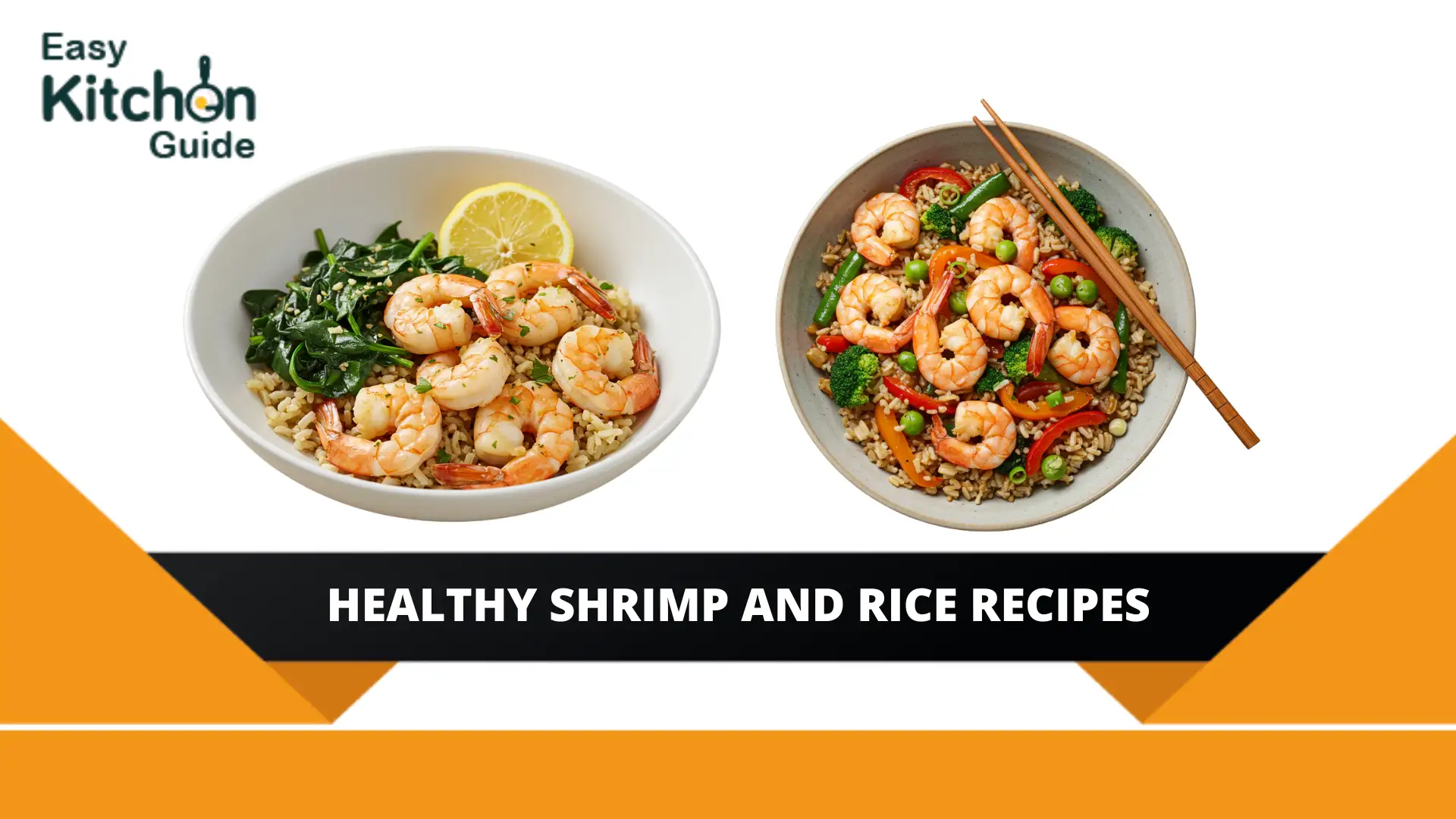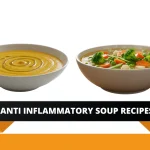Shrimp and rice make an ideal healthy meal choice thanks to their balance of lean protein, complex carbohydrates, and essential nutrients. Shrimp is low in calories and rich in omega-3 fatty acids, while rice – especially brown rice – adds fiber, vitamins, and steady energy. Together, they create a satisfying, nutritious dish that supports weight management, heart health, and overall well-being.
What Makes a Shrimp and Rice Recipe Healthy?
Table of Contents,
A shrimp and rice recipe becomes healthy when it includes nutrient-dense ingredients, avoids processed or fatty additions, and uses cooking methods that preserve flavor without adding unnecessary calories. With a few thoughtful choices, you can turn this simple dish into a well-balanced meal ideal for clean eating and meal prepping.
Key Ingredients to Use and Avoid
The foundation of any healthy shrimp and rice dish lies in the ingredients you select. Choosing fresh, whole foods ensures your body gets the right nutrients without hidden sugars, salts, or fats.
Use These Healthy Ingredients:
- Fresh or frozen shrimp (preferably wild-caught and deveined)
- Brown rice, wild rice, or quinoa instead of white rice for added fiber
- Fresh vegetables like bell peppers, spinach, broccoli, or carrots
- Healthy oils such as olive oil or avocado oil (used in moderation)
- Natural flavor enhancers like garlic, ginger, lemon juice, and fresh herbs
- Low-sodium broth or coconut aminos as a substitute for salty sauces
Avoid These Less Healthy Additions:
- Creamy sauces, butter-heavy toppings, or cheese-based mixtures
- Excess salt or regular soy sauce (opt for low-sodium versions)
- Deep-fried shrimp or heavily processed breadcrumbs
- Pre-packaged seasoning mixes with added sugar and preservatives
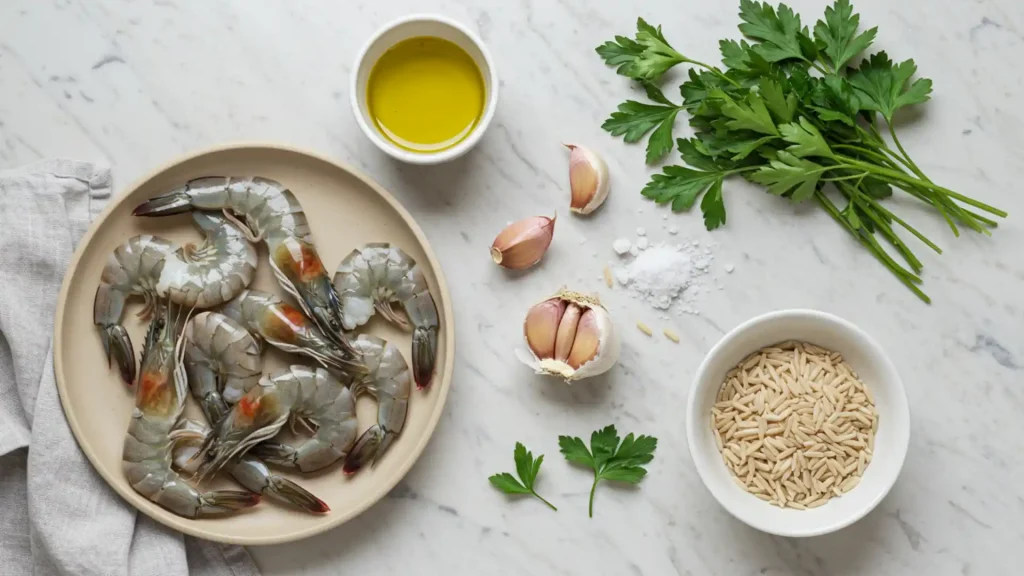
These swaps not only lower the calorie count but also boost the dish’s nutritional value.
Tips for Reducing Calories and Enhancing Flavor
Making your dish lighter does not mean compromising on taste. Here are a few strategies to keep it flavorful yet healthy:
- Replace salt with herbs and spices like cumin, paprika, chili flakes, or oregano.
- Add colorful vegetables to increase fiber and nutrients while making the meal more filling.
- Control rice portions – stick to ½ to 1 cup per serving to manage calorie intake.
- Marinate shrimp with citrus juice, garlic, and herbs for flavor without extra fat.
- Use low-fat yogurt, lemon juice, or balsamic vinegar as bases for sauces and dressings.
These simple changes can help you enjoy a rich, satisfying meal while staying on track with your health goals.
Choosing the Right Cooking Methods – Grilled, Sautéed, or Steamed
Cooking method plays a big role in determining how healthy your shrimp and rice dish turns out. Avoid deep frying and opt for lighter techniques that enhance the natural flavors of your ingredients.
- Grilled Shrimp: A great option for adding a smoky, savory flavor without added fat. It works well for BBQs and can be prepared quickly.
- Sautéed Shrimp: Perfect for quick meals. Use a non-stick pan with a small amount of olive oil and toss in garlic, onion, or bell peppers for extra taste.
- Steamed Shrimp: One of the healthiest options. It retains most of the nutrients and keeps the shrimp tender and juicy without any added oils.
By choosing the right cooking method, you can enjoy a tasty, satisfying dish that supports your health and fitness journey.
Top 5 Healthy Shrimp and Rice Recipes You Can Make at Home
Shrimp and rice dishes are easy to customize, and with a few healthy twists, you can enjoy flavorful meals without compromising on nutrition. Below is a delicious recipe to get you started on your healthy shrimp and rice journey.
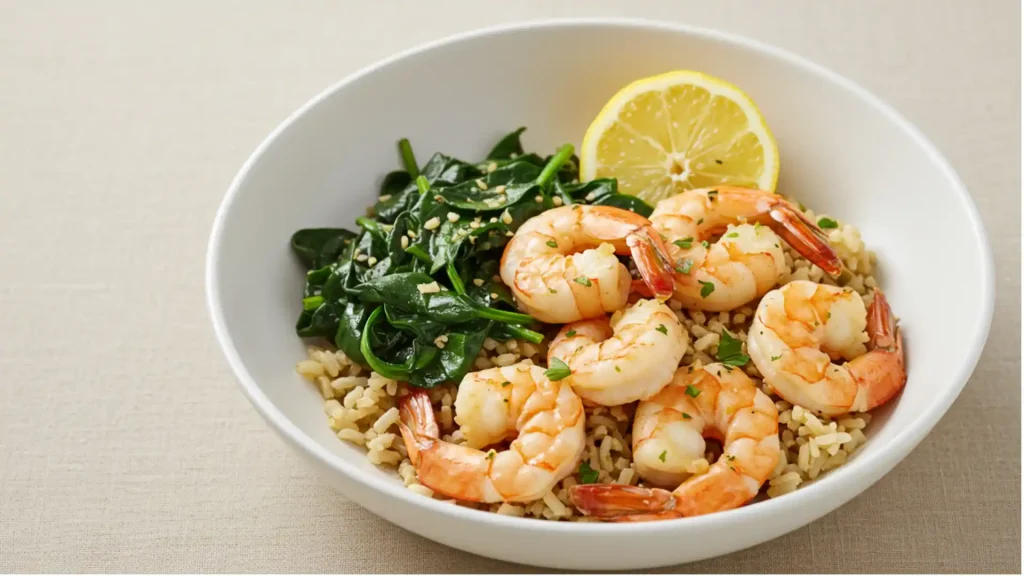
1. Garlic Butter Shrimp with Brown Rice and Spinach
This dish is a wholesome, protein-rich meal packed with flavor from garlic and lemon, balanced with fiber-rich brown rice and nutrient-dense spinach. It is quick to make, ideal for weeknight dinners, and perfect for meal prep.
Ingredients and Nutritional Value
Ingredients:
- 1 cup cooked brown rice
- 200 grams raw shrimp, peeled and deveined
- 1 tablespoon olive oil or light butter
- 3 cloves garlic, minced
- 2 cups fresh spinach
- Juice of ½ lemon
- Salt and pepper to taste
- Optional: Red chili flakes, fresh parsley
Approximate Nutritional Value (per serving):
- Calories: 380
- Protein: 28g
- Carbohydrates: 30g
- Fiber: 4g
- Fat: 15g (mostly healthy fats from olive oil)
- Sodium: Low (depending on salt added)
Cooking Instructions
- Cook the Brown Rice: Follow package instructions or use a rice cooker. Set aside once done.
- Sauté the Garlic: In a non-stick skillet, heat olive oil over medium heat. Add minced garlic and cook for 1–2 minutes until fragrant.
- Cook the Shrimp: Add the shrimp to the skillet and cook for 2–3 minutes per side, until pink and cooked through. Season with salt, pepper, lemon juice, and red chili flakes if using.
- Add Spinach: Toss in the fresh spinach and cook for another 1–2 minutes until wilted.
- Assemble the Bowl: In a serving bowl or plate, layer the cooked brown rice, then top with the garlic butter shrimp and spinach. Garnish with fresh parsley if desired.
2. Lemon Herb Shrimp with Quinoa and Wild Rice Mix
This vibrant and protein-packed recipe combines the zesty freshness of lemon with aromatic herbs, nutrient-rich quinoa, and wild rice for a hearty, healthy meal. It’s gluten-free, high in protein, and perfect for a light lunch or dinner.
Ingredients and Nutritional Value
Ingredients:
- ½ cup cooked quinoa
- ½ cup cooked wild rice
- 200 grams shrimp, peeled and deveined
- 1 tablespoon olive oil
- Juice and zest of 1 lemon
- 1 teaspoon dried oregano or Italian herb blend
- 1 teaspoon garlic powder or 2 cloves fresh garlic, minced
- Salt and black pepper to taste
- Optional: Chopped parsley or dill for garnish
Approximate Nutritional Value (per serving):
- Calories: 400
- Protein: 30g
- Carbohydrates: 35g
- Fiber: 5g
- Fat: 14g
- Sodium: Low to moderate (depending on added salt)
Cooking Instructions
- Prepare the Grains: Cook quinoa and wild rice according to package instructions. Set aside and mix them together in a large bowl.
- Marinate the Shrimp: In a bowl, mix shrimp with lemon juice, zest, herbs, garlic, salt, and pepper. Let it marinate for at least 10–15 minutes.
- Cook the Shrimp: Heat olive oil in a skillet over medium heat. Add shrimp and cook for 2–3 minutes on each side until fully cooked and slightly golden.
- Assemble the Dish: Spoon the quinoa and wild rice mix onto a plate. Top with the lemon herb shrimp, and garnish with chopped fresh parsley or dill.
This dish is light yet filling, loaded with nutrients, and offers a refreshing citrus-herb flavor that feels gourmet but takes less than 30 minutes to make.
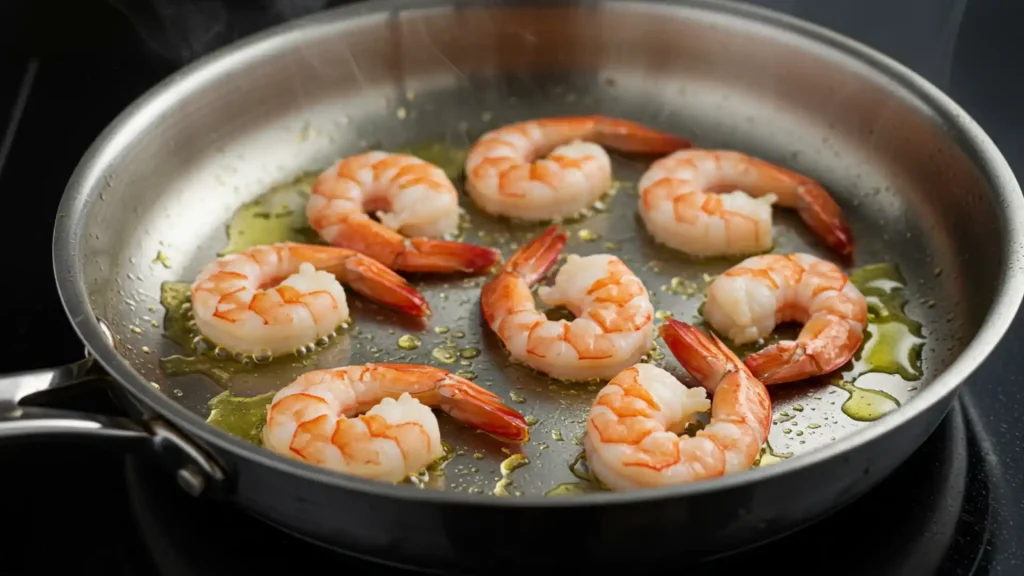
3. Shrimp Stir Fry with Veggies and Jasmine Rice
A vibrant, one‑pan meal that combines tender shrimp with crisp vegetables and fragrant jasmine rice for a nutrient‑packed dinner.
Ingredients and Nutritional Value
Ingredients:
- 1 cup cooked jasmine rice
- 200 g shrimp, peeled and deveined
- 1 tablespoon sesame oil (or olive oil)
- 1 cup broccoli florets
- ½ red bell pepper, sliced
- 1 carrot, thinly sliced
- 2 cloves garlic, minced
- 1 teaspoon grated fresh ginger
- 1 tablespoon low‑sodium soy sauce (or tamari)
- Optional garnish: sliced green onions, sesame seeds
Approximate Nutritional Value (per serving):
- Calories: 420
- Protein: 28 g
- Carbohydrates: 45 g
- Fiber: 5 g
- Fat: 14 g
- Sodium: Moderate
Cooking Instructions
- Prep rice and veggies: Cook jasmine rice according to package directions. Wash and slice broccoli, bell pepper, and carrot.
- Sear the shrimp: Heat oil in a wok or large skillet over medium‑high. Add shrimp and cook 2–3 minutes per side until just opaque. Remove shrimp and set aside.
- Stir‑fry the aromatics: In the same pan, add garlic and ginger; cook for 30 seconds until fragrant.
- Cook the vegetables: Add broccoli, bell pepper, and carrot; stir‑fry for 4–5 minutes until veggies are crisp‑tender.
- Combine and season: Return shrimp to the pan, pour in soy sauce, and toss everything together until heated through.
- Serve: Spoon jasmine rice onto plates and top with shrimp and veggies. Garnish with green onions and sesame seeds if desired.
4. Coconut Curry Shrimp with Basmati Rice
A creamy, aromatic dish where tender shrimp swim in a light coconut‑curry sauce served over fluffy basmati rice – rich in flavor and healthy fats.
Ingredients and Nutritional Value
Ingredients:
- 1 cup cooked basmati rice
- 200 g shrimp, peeled and deveined
- 1 tablespoon coconut oil (or light olive oil)
- 1 small onion, finely chopped
- 2 cloves garlic, minced
- 1 tablespoon fresh ginger, grated
- 1 tablespoon red curry paste
- 1 cup light coconut milk
- 1 cup baby spinach or kale
- Juice of ½ lime
- Fresh cilantro for garnish
Approximate Nutritional Value (per serving):
- Calories: 450
- Protein: 26 g
- Carbohydrates: 40 g
- Fiber: 4 g
- Fat: 20 g (from coconut milk and oil)
- Sodium: Moderate
Cooking Instructions
- Cook rice: Prepare basmati rice following package instructions; keep warm.
- Sauté aromatics: Heat coconut oil in a skillet over medium heat. Add onion, garlic, and ginger; cook 2–3 minutes until softened.
- Build the curry: Stir in red curry paste, then add coconut milk. Bring to a gentle simmer.
- Add shrimp: Slide shrimp into the sauce and cook 3–4 minutes until pink and cooked through.
- Finish with greens: Stir in spinach or kale until wilted, then squeeze in lime juice.
- Plate and garnish: Serve curry over basmati rice and top with fresh cilantro.
5. Mediterranean Shrimp Bowl with Brown Rice and Feta
A fresh, Mediterranean‑inspired bowl featuring grilled shrimp, herb‑infused brown rice, crisp vegetables, and tangy feta cheese.
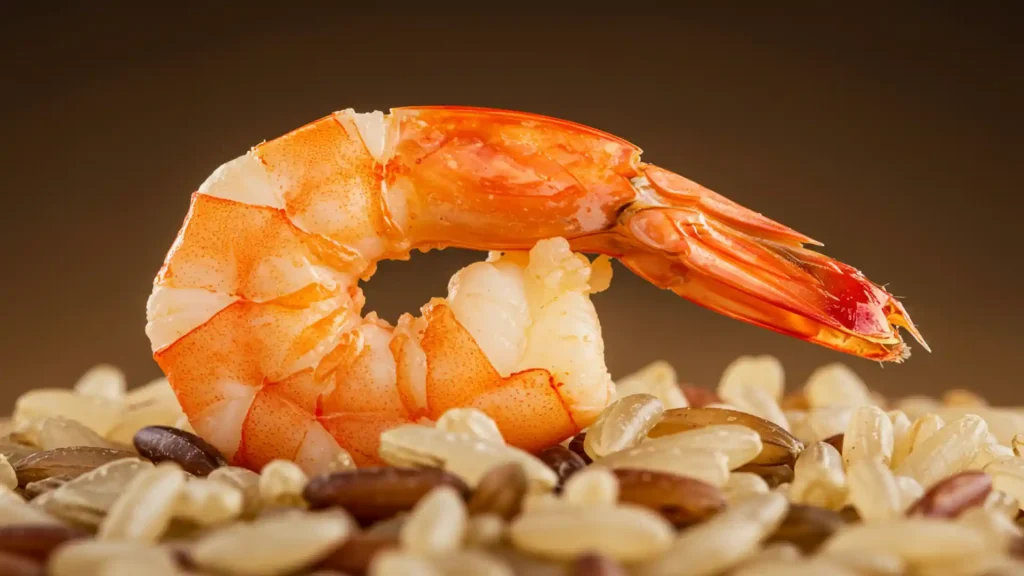
Ingredients and Nutritional Value
Ingredients:
- 1 cup cooked brown rice
- 200 g shrimp, peeled and deveined
- 1 tablespoon olive oil
- 1 teaspoon dried oregano
- 1 clove garlic, minced
- 1 cup cherry tomatoes, halved
- ½ cucumber, diced
- ¼ red onion, thinly sliced
- 2 tablespoons crumbled feta cheese
- Juice of ½ lemon
- Handful of fresh parsley or mint, chopped
Approximate Nutritional Value (per serving):
- Calories: 410
- Protein: 27 g
- Carbohydrates: 42 g
- Fiber: 6 g
- Fat: 15 g
- Sodium: Moderate
Cooking Instructions
- Season the shrimp: Toss shrimp with olive oil, oregano, garlic, salt, and pepper.
- Cook the shrimp: Grill or sauté shrimp over medium heat for 2–3 minutes per side until opaque.
- Prepare the bowl: In serving bowls, divide brown rice, then arrange shrimp, tomatoes, cucumber, and red onion on top.
- Add feta and herbs: Sprinkle with feta cheese and fresh parsley or mint.
- Dress and serve: Drizzle lemon juice over the bowls and serve immediately.
Meal Prep and Storage Tips for Shrimp and Rice Dishes
Preparing shrimp and rice in advance saves time and keeps you on track with healthy eating—even on busy weekdays. With the right storage methods and portioning strategies, you can maintain flavor, texture, and nutritional value throughout the week.
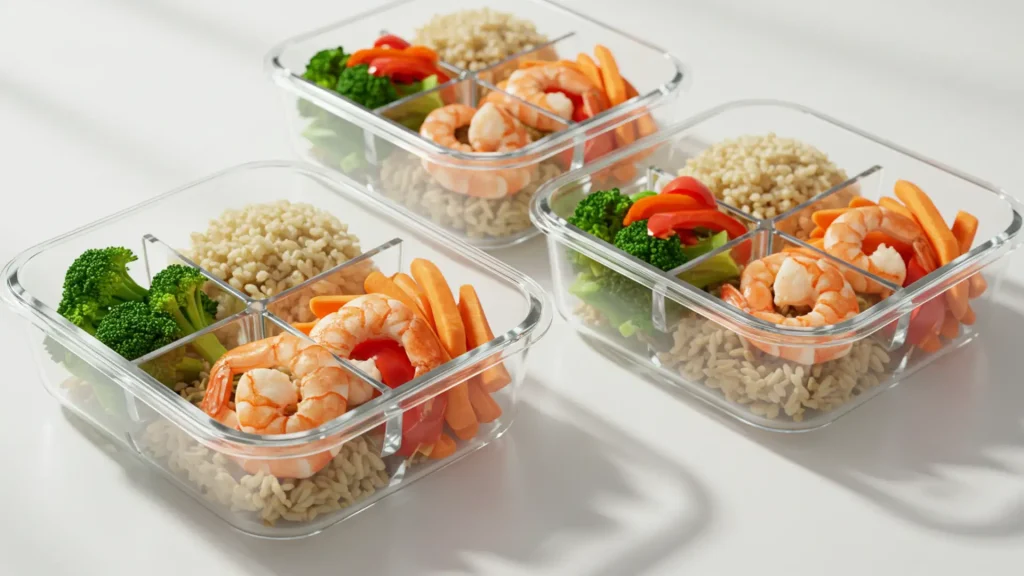
How to Store and Reheat Without Losing Flavor
Shrimp and rice can dry out or become rubbery if not stored and reheated properly. Follow these tips to preserve taste and texture:
- Cool Quickly: After cooking, let shrimp and rice come to room temperature for no more than 1 hour.
- Use Airtight Containers: Divide into individual portions in sealable, microwave‑safe containers to lock in moisture.
- Layering Matters: Place rice on the bottom and shrimp on top to prevent shrimp juices from over‑softening the rice.
- Reheat Gently:
- Microwave: Sprinkle a few drops of water over rice, cover loosely, and heat on medium power in 30‑second bursts.
- Stovetop: Warm a little olive oil or broth in a skillet over low heat, add shrimp and rice, and stir until heated through.
- Avoid Overheating: Stop as soon as shrimp are opaque and rice is hot to prevent rubbery shrimp and mushy grains.
Portion Control and Serving Sizes
Keeping portions in check helps manage calorie intake and ensures balanced nutrition:
- Standard Portion: Aim for about ½ to 1 cup of cooked rice and 3–4 ounces (about 100 – 120 g) of shrimp per meal.
- Add Veggies: Bulk up your container with 1–2 cups of mixed vegetables—steamed, roasted, or raw—to increase fiber and vitamins.
- Track Calories: If you’re monitoring calories, use a kitchen scale or measuring cups to log each component.
- Label Your Meals: Note the date and contents on each container to keep track of freshness and avoid waste.
Making Shrimp and Rice Part of Your Weekly Meal Plan
Integrate shrimp and rice dishes into your routine with simple planning strategies:
- Theme Nights: Assign different flavor profiles to each day (e.g., “Curry Monday,” “Mediterranean Wednesday”) to keep meals exciting.
- Batch Cooking: Cook large batches of rice and shrimp separately, then mix and match with sauces, herbs, and sides.
- Freezer-Friendly Options: For longer storage, freeze fully cooked shrimp-and-rice bowls in freezer‑safe bags for up to 2 months. Thaw overnight in the fridge before reheating.
- Grocery List Essentials: Stock up on shrimp, your favorite rice varieties, frozen veggies, herbs, and healthy sauces to streamline prep.
- Prep Day Routine: Dedicate 1–2 hours on the weekend to cook grains, clean and spice shrimp, and chop vegetables, then assemble as you go.
By following these storage and planning tips, you’ll enjoy fresh‑tasting, nutritious shrimp and rice meals all week long without the hassle of daily cooking.
Health Benefits of Including Shrimp and Rice in Your Diet
Enjoying shrimp and rice together offers more than just great taste—it delivers a powerful combination of nutrients that can support multiple aspects of your health. From weight management to heart protection and sustained energy, this duo has you covered.
Supports Weight Management
Shrimp and rice make a filling, low‑calorie meal that helps control hunger and maintain a healthy weight.
- High Protein, Low Calorie: A 3‑ounce serving of shrimp provides about 18 g of protein for only 84 calories—helping you feel full with fewer calories.
- Fiber‑Rich Carbohydrates: Choosing brown or wild rice adds 3–4 g of fiber per cup, which slows digestion and keeps you satisfied longer.
- Portion Control Made Easy: Balanced servings of shrimp (100 – 120 g) and rice (½ – 1 cup cooked) naturally limit overeating without sacrificing flavor.
Including this meal regularly can support calorie goals and curb cravings between meals.
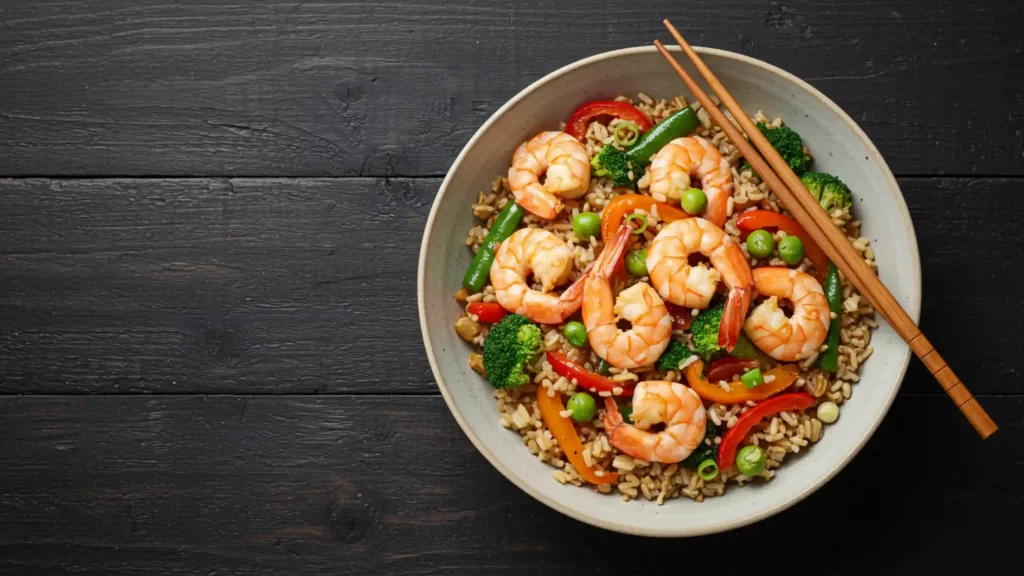
Promotes Heart Health and Lower Cholesterol
Both shrimp and whole‑grain rice contribute heart‑friendly nutrients that help manage cholesterol and blood pressure.
- Omega‑3 Fatty Acids: Shrimp contains EPA and DHA, which reduce inflammation and may lower triglycerides.
- Low in Saturated Fat: Compared with red meat or creamy sauces, shrimp delivers lean protein with minimal unhealthy fats.
- Whole Grain Benefits: Brown and wild rice are rich in magnesium and fiber, which support healthy blood pressure and help reduce LDL (“bad”) cholesterol.
By swapping higher‑fat proteins and refined grains for shrimp and brown rice, you create a heart‑protective plate.
Boosts Energy with Lean Protein and Complex Carbs
The perfect balance of shrimp’s protein and rice’s complex carbohydrates fuels both muscles and mind throughout the day.
- Muscle Repair and Growth: Protein from shrimp repairs tissues after exercise and supports lean muscle mass.
- Stable Blood Sugar: Complex carbs in brown or wild rice break down slowly, preventing energy crashes and sugar spikes.
- Sustained Vitality: This nutrient pairing keeps you energized for hours—ideal for busy workdays, workouts, or family activities.
Together, shrimp and rice power your body with lasting energy and essential building blocks for overall well‑being.
Frequently Asked Questions
1. Can I use frozen shrimp instead of fresh?
Yes. Thaw frozen shrimp in the refrigerator overnight or under cold running water, then pat it dry before cooking. This ensures the best texture and prevents excess moisture in your dish.
2. What type of rice is healthiest for these recipes?
Brown rice, wild rice, or a quinoa blend are top choices. They offer more fiber, vitamins, and minerals than white rice, helping you stay fuller longer and maintain stable blood sugar.
3. How long can I safely store cooked shrimp and rice in the refrigerator?
Store in airtight containers for up to 3–4 days. When reheating, use a gentle method (medium‑power microwave bursts or stovetop with a splash of water/broth) to prevent rubbery shrimp and dry rice.
4. Can I freeze prepared shrimp and rice meals?
Absolutely. Cool completely, then pack into freezer‑safe containers or bags. Freeze for up to 2 months. Thaw overnight in the fridge before reheating gently to preserve flavor and texture.
5. Are these recipes suitable for special diets like gluten‑free or dairy‑free?
Most are naturally gluten‑free—just use tamari instead of soy sauce—and dairy‑free if you swap butter for olive or avocado oil. Always check labels on sauces and seasonings to ensure they meet your dietary needs.
Conclusion
Shrimp and rice dishes are not only delicious but also offer a perfect balance of lean protein and complex carbohydrates, making them an excellent choice for a healthy meal. By incorporating whole grains, fresh vegetables, and using healthy cooking methods, you can boost the nutritional value without sacrificing flavor. Whether you’re preparing for meal prep or simply looking to create a wholesome dinner, shrimp and rice recipes are versatile, easy to make, and perfect for supporting your overall wellness goals.

